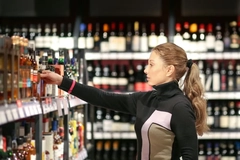
- Industry news
Industry news
- Category news
- Reports
- Key trends
- Multimedia
Multimedia
- Journal
- Events
- Suppliers
Suppliers
- Home
- Industry news
Industry news
- Category news
- Reports
- Key trends
- Multimedia
Multimedia
- Events
- Suppliers
Suppliers
Model can predict which food packaging absorbs the least flavor, study finds

24 Aug 2018 --- Polymeric packaging can sometimes absorb aroma molecules, leading to a reduction in flavor in food and beverage products. Recent research at the A*STAR Institute of High Performance Computing has developed a model by which aroma molecule absorption by packaging polymers can be quickly predicted, meaning the best materials can be chosen by packaging manufacturers.
Experimentally measuring the loss of flavor molecules and other organic compounds into their polymer packaging is difficult and slow, explains Jianwei Zheng from the A*STAR Institute of High Performance Computing. “The concentration of organic compounds such as flavor molecules in a beverage is very dilute,” says Zheng. “And the absorption process from the beverage into the polymer can take a few months to reach equilibrium,” he adds.
In order to develop a quicker method, researchers at the A*STAR Institute partnered up with Coca-Cola. The result was a mathematical calculation which can predict the extent to which the packaging would absorb organic molecules from the food or beverages they contain. The model is based on the Flory-Higgins theory, a well-known model of polymer properties developed in the 1940s.
In the case of food packaging, the calculation sums up the mixing of each chemical component of the polymer with each chemical component of the aroma molecule. This predicts the extent to which a given aroma molecule will dissolve into a given polymer.
Tests using aroma molecules such as limonene and eugenol, and polymers such as PET and PVC proved to be successful. Zheng says, “The calculation is very fast, and the results were consistent with available experimental data.”
Zheng further tells PackagingInsights, “fine-tuning group contribution parameters and model parameters and building up the database for more groups” come next. The technology can eventually be used by the packaging industry to determine its selection of packaging materials, Zheng adds.











